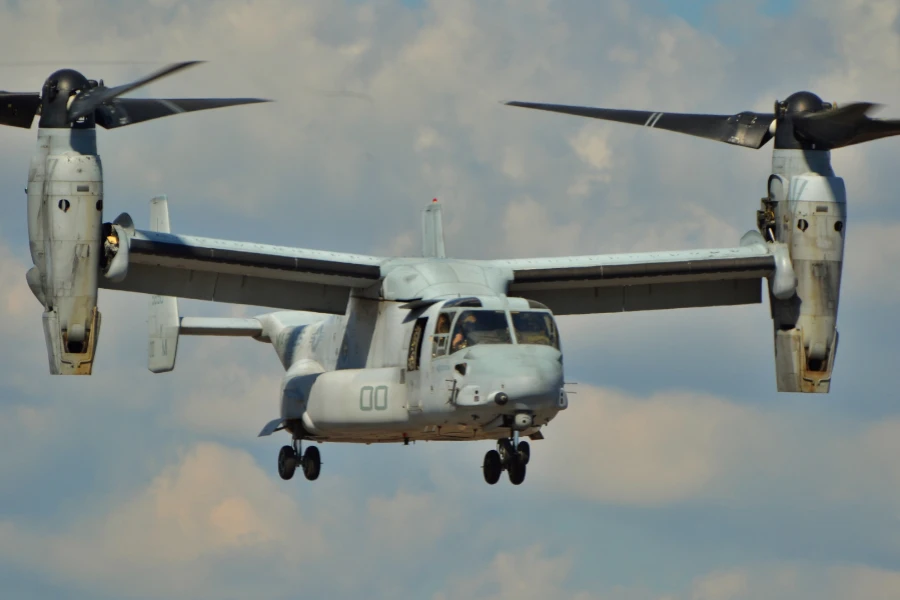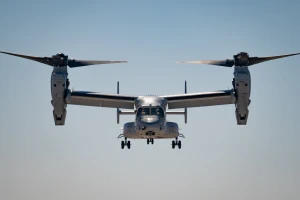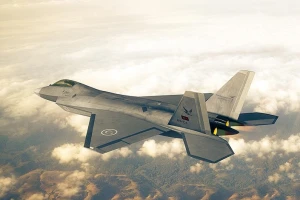- DEFENCE
- 1 year before
Pentagon lifts ban on V-22 Osprey flights
The Pentagon is preparing to lift the flight ban on V-22 Osprey tiltrotor aircraft after three months of research and security measures. Security plan approved
-

- 1 year before
- Category: DEFENCE
- Published: 04/03/2024

The United States Department of Defense (Pentagon) is preparing to lift the flight ban for V-22 Osprey tiltrotor aircraft next week. This decision followed a high-level meeting at which Defense Secretary Lloyd Austin approved plans for the military services to return to operations in a safe and measured manner.
US officials said the Pentagon would lift the no-fly ban on the V-22 Osprey tiltrotor aircraft that had been grounded and allow the services to begin implementing plans to bring the Osprey back into flight. U.S. Defense Secretary Austin met Friday morning with senior service leaders, including the U.S. Navy and Air Force, to discuss the plans, which have not yet been made public.
The Osprey has been grounded for almost three months after a plane belonging to the Air Force Special Operations Command crashed in Japan on November 29 after eight service members died. The accident in Japan and the Osprey crash in Australia in August that killed three marines are still under investigation. The US Air Force said they have identified what malfunctioned in the accident in Japan but do not yet know why it malfunctioned. The decision to end the flight ban belongs to the U.S. Naval Air Systems Command, but Austin had requested an information briefing on the matter due to significant security concerns and the involvement of three services and a critical ally in the program. Although Austin did not have approval authority during the flight's return process, U.S. officials said it was seen as an important step for him to approve the shuttle's plan.
In the time since the accident, the services have worked on plans to mitigate the known material breakdown by carrying out additional safety checks and establishing a new, more conservative approach to how the Osprey is operated.
The Pentagon's lifting of the flight ban on the Osprey will allow military services to re-operationalize the tiltrotor aircraft and perform critical missions. However, the services will need to carefully implement the new measures to ensure the safe and effective operation of the Osprey.
U.S. Defense Secretary Austin's decision to lift the flight ban on V-22 Osprey tiltrotor aircraft is based on extensive safety checks carried out after the crash. The
Services implemented a number of additional safety checks to mitigate the known material failure of the Osprey, including: Stricter maintenance and inspection: The Osprey fleet will be subject to stricter maintenance and inspection programs.
New training protocols: Pilots and crew will undergo new, more conservative training protocols on how to operate the Osprey safely and effectively.
Operational restrictions: Services may restrict the Osprey from flying under certain flight conditions or maneuvers.
Improved maintenance manuals: The services will publish improved guidelines for the maintenance and repair of the Osprey. In addition to these security checks, the services are also making changes to Osprey's design and software. These changes are aimed at further improving the safety and safety of the aircraft.
The Pentagon will ensure that these new measures are carefully implemented to ensure the safe and effective operation of the Osprey. The services will also monitor the Osprey fleet on an ongoing basis and will take additional safety measures as needed. The Osprey remains a critical asset to the U.S. military, and the services are committed to ensuring the aircraft is operated safely and effectively.






Write Comment